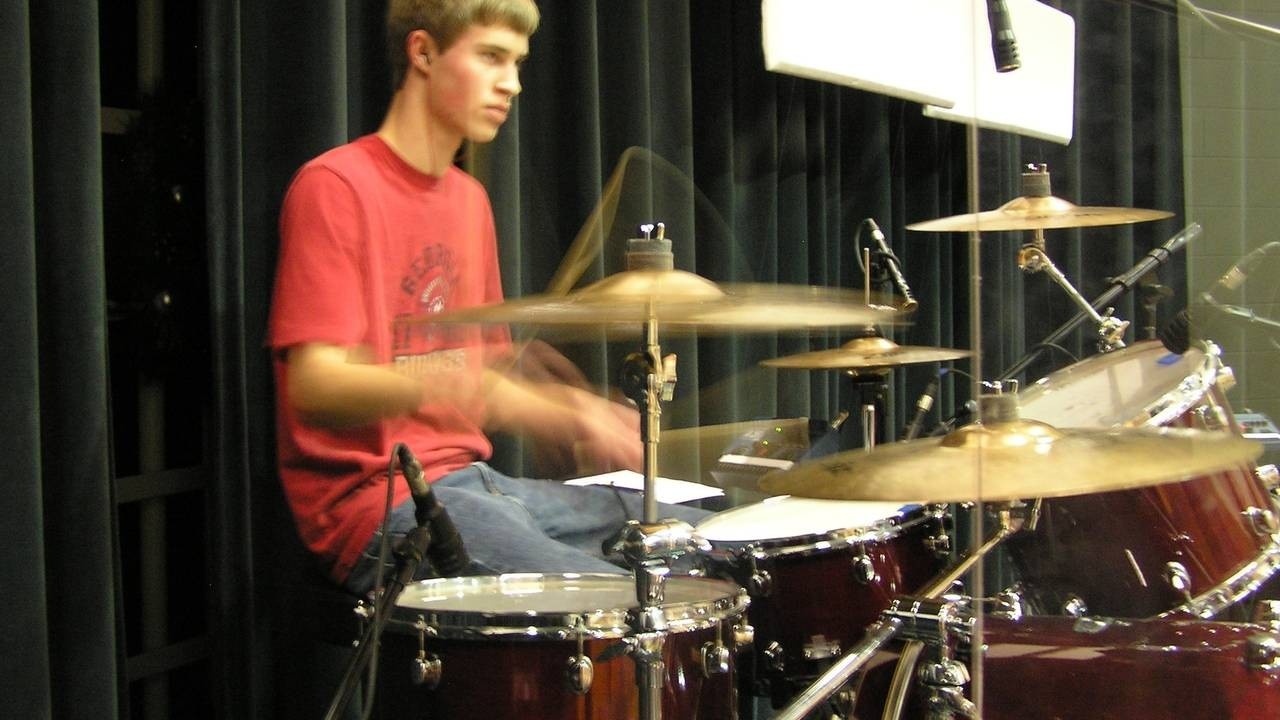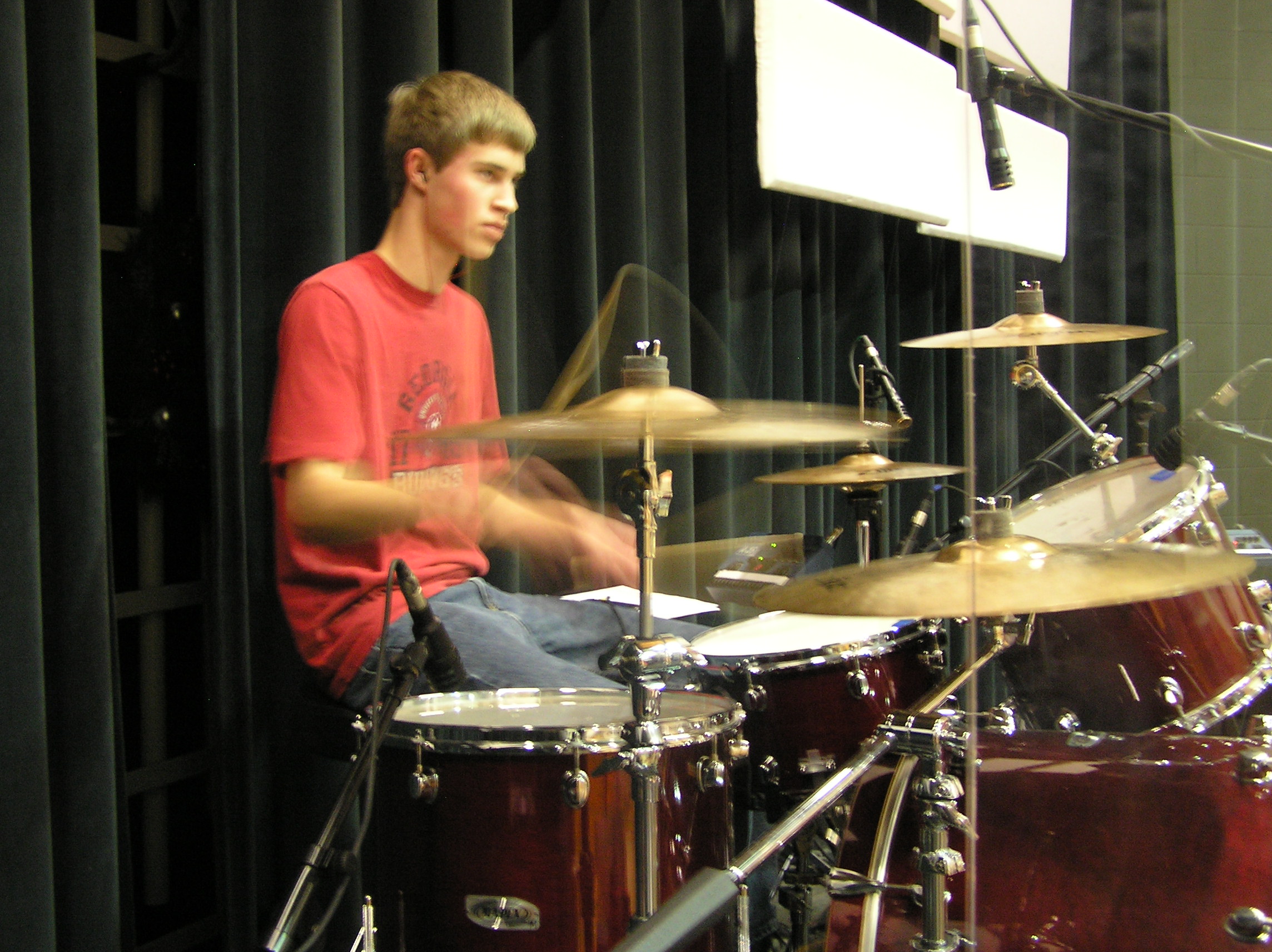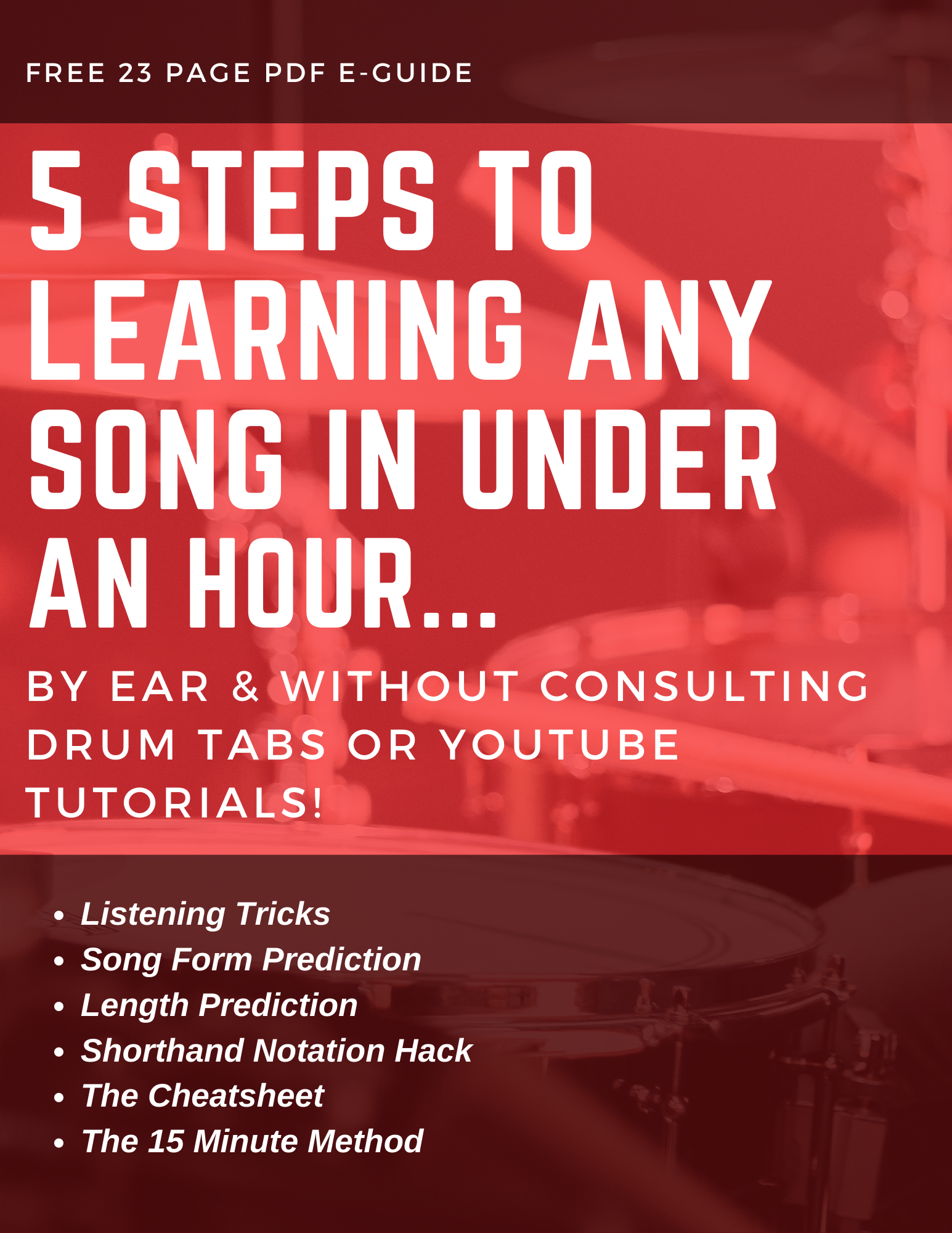3 things 12 years of church drumming taught me...

Do you remember the first gig you ever played, first song you ever learned, or just that first moment when something got you really excited about the drums?
I think we can all pinpoint one of those moments, because we all have a reason deep down inside why we play the drums. Something happened at some point in life that lit a fire that drives us to keep working at the nitty gritty non glamorous skills that help us to nail our favorite songs.
That big, motivating moment for me was when I got dragged into playing in the high school worship band at my church. I love looking back at this story, and I actually have a blog post about it on the website right here if you want to read the full story.
I was unprepared, timid, and didn’t want to play in front of people. But the “trial by fire” created by the opportunity to play in church completely transformed my relationship with my instrument, and I quickly started learning some key skills that would carry over into every other area of my playing over the years. To this day, probably half of my “gigs” over the last 12 years have been in church. This environment taught me how to be a musician and prepared me for life in a lot of ways.

These are the 3 biggest things that church drumming taught me. Keep in mind that modern worship music is just straight rock. If you play in a rock, country, or even singer-songwriter style band, you’ll relate to this stuff for sure.
#1: It’s not about how many notes you play. It’s about the sound and feel that you create.
Worship music is all about sounds and textures (ask any electric guitar player who plays in church!). Funny thing is, this is true with most pop music today too. Playing in church taught me how to simplify my playing, strip the groove down to the bare bones, and construct intentional, compelling fills that fit the song.
I learned that old-school rolls around the kit often weren’t what was needed in these church tunes. More often, drum fills and grooves were simpler and more sparse. But everything always fit with the melody, which made every simple part very strategic. I eventually realized that this drumming approach rings true in most modern pop music, most singer-songwriter styles, and lots of rock music. Most of the time we’re not applying a one-size-fits-all approach with a vocabulary of grooves and fills. Rather, we’re playing less notes but being very thoughtful in how we play them.
This entire mindset shift taught me how to listen more, pay attention to the vocal and the lead lines, and let the melody guide my playing. This approach is absolutely essential in worship music, but it’s also a super musical approach for nearly every other genre. Yes, there are styles like soul, Motown, or R&B where the music is more groove based rather than part-based. But even then you want to carry with you that subtle approach of "playing for the song."
Ultimately that’s what it comes down to - playing for the song. For me personally, there was no better environment in which to have that pounded into my head than the church music environment.
#2: Your dynamics tell the story of the song.
In most rock music, and especially in modern worship music, the drummer plays a key roll in the development of the song. The drums are extremely dynamic (volumes changing constantly), and the parts are very specific. Every musician has distinct parts to play (like in any rock song), so that burden doesn’t rest only on the drummer’s shoulders. But without the super-dynamic playing of the drummer, the song won’t feel as exciting as it needs to.
This was where I learned to pay attention to detail, making sure I was playing tom patterns right, nailing the kick patterns, and always knowing whether I was going to the ride, open hats, toms, crash, closed hats, rim of the snare…etc. I learned to be aware of all the timekeeping (SOUND) options on the kit at my disposal and to use them strategically throughout the song based on the dynamic.
Always be saving something for the biggest part of the song, which is often the crash. Wait and “ride” on the crash when things get huge, and in the meantime stick to open hats or ride. Even be aware of the different sounds you can get out of your ride, because you may want to “ping” for a chorus then “wash” for a bridge. Be aware of sound and dynamics, always knowing where you’re at in the song and where things are going. In the worship genre (and most rock-based styles), the drums are an integral part of telling the story of the song. So know the song really well! Playing in church taught me to not cut corners. I had to really learn the songs and play them well.
#3: You as the drummer have to be way more interested in the song than in your drumming. Be more a musician and less a drummer.
If you want to play lots of notes, join a fusion band. If you want to play tons of crazy fast fills, join a punk or metal band. I personally had to learn to separate playing styles from each other and not let my jazz playing seep into my rock playing, because the “Chicago” or “Red Hot Chili Peppers” kind of genre-fusion doesn’t work so well in church most of the time. :)
I had to focus my playing on supporting the song, which actually affected how I prepared for every Sunday. Rather than sit down and start playing through the songs, I would first just listen to the tracks through headphones. By simply sitting and listening without playing, I was reminding myself that everything I would eventually play would need to be all about the song. I’d focus on internalizing the song and knowing and feeling all the parts going on so that whatever I played would naturally fit with that.

This goes for any genre. If you want your playing to naturally “speak the language” of the genre, spend lots of time sitting in your favorite chair and just listening to the tunes through headphones. This up-close, detailed kind of listening helps you take in lots more than you would in the car, and it helps you internalize everything in the recording.
Sure, I’d still play along and jam out to the recordings eventually. But from a technical standpoint, I could usually play the song already. Most worship songs are simple and not difficult to play technically. But they can be difficult to play musically. That’s why I had to shift my preparation process to being more listening based.
Maybe that’s something you should try with whatever genre you’re playing often. Yes, keep practicing and playing your drums to further your technical abilities. But at some point you have to just sit down and absorb the MUSIC that’s happening. The best way to blend into a song and a style is to know that style really well.
Language learning experts always recommend immersing yourself into a culture in order to learn the language. Do that with music! Immerse yourself into the style and into the songs, and the appropriate parts will naturally come out.
Alright, to wrap this up I want you to check out my free PDF guide, “5 steps to learning any song in under 60 minutes.” This guide is about song learning, song charting, and song memorization. But ultimately it’s about learning how to listen. This is key, and this is the part of drumming often neglected. What good are our singles, doubles, paradiddles, and 4 way coordination if we’re not playing songs well?
Dig into the guide, because this is sure to center your playing musically.
- Learn listening tricks to hear things you’ve never heard before
- Predict song form
- Predict length of song sections
- Learn a shorthand notation hack that makes writing out grooves simple
- Write a cheatsheet chart in as quick as 15 minutes
Thanks for reading, and stay non glamorous!
Stephen



